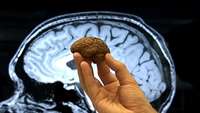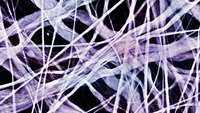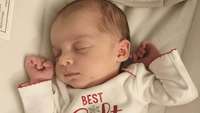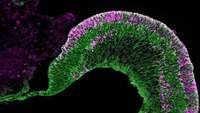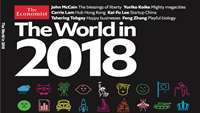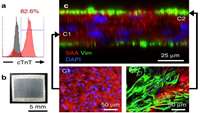Mini brains may wrinkle and fold just like ours
Flat brains growing on microscope slides may have revealed a new wrinkle in the story of how the brain folds.
3-D printed microfibers could provide structure for artificially grown body part
Much as a frame provides structural support for a house and the chassis provides strength and shape for a car, a team of Penn State engineers believe they have a way to create the structural framework for growing living tissue using an off-the-shelf 3-D printer.
T-Regulating Hair Follicle Stem Cells
Regulatory T (Treg) cells are key regulators of immune tolerance and are capable of suppressing multiple immune cell types and blocking excessive inflammatory responses. Although roles for tissue-resident Foxp3+ Treg cells in maintaining non-lymphoid tissue homeostasis have been suggested, evidence of a relationship between tissue-specific stem cells and Treg cells remains sparse
Woman gives birth to baby from embryo frozen 24 years ago
A baby has been born after becoming the longest-frozen embryo after being cryopreserved for 24 years.
Gene therapy for rare form of blindness wins US approval
U.S. health officials on Tuesday approved the nations first gene therapy for an inherited disease, a treatment that improves the sight of patients with a rare form of blindness. It marks another major advance for the emerging field of genetic medicine.
An Eye Organoid Approach Identifies Six3 Suppression of R-spondin 2 as a Critical Step in Mouse Neuroretina Differentiation
Recent advances in self-organizing, 3-dimensional tissue cultures of embryonic stem cells (ESCs) and induced pluripotent stem cells (iPSCs) provided an in vitro model that recapitulates many aspects of the in vivo developmental steps. Using Rax-GFP-expressing ESCs, newly generated Six3−/− iPSCs, and conditional null Six3delta/f;Rax-Cre ESCs, we identified Six3 repression of R-spondin 2 (Rspo2) as a required step during optic vesicle morphogenesis and neuroretina differentiation.
Study introduces new bioengineered asteroids for examining neural connections
Houston Methodist neuroscientist Robert Krencik, Ph.D., and his team have developed a new system to reduce the time it takes to grow these brain models, which will give them the ability to screen drugs and study whats behind disease-causing mutations more quickly.
The World in 2018 from The Economist highlights key global themes to watch for next year
The World in 2018, the annual publication from The Economist, predicts that 2018 will be a nerve-jangling year as people across the world attempt to escape the tensions of politics and the frenzies of technology.
ViaCyte bags $10M for diabetes cell therapies
ViaCyte picked up $10 million to fund the clinical development of its stem cell-derived treatment for patients who have Type 1 diabetes and are at risk of complications.
Cardiopatch platform enables maturation and scale-up of human pluripotent stem cell-derived engineered heart tissues
Despite increased use of human induced pluripotent stem cell-derived cardiomyocytes (hiPSC-CMs) for drug development and disease modeling studies, methods to generate large, functional heart tissues for human therapy are lacking.


